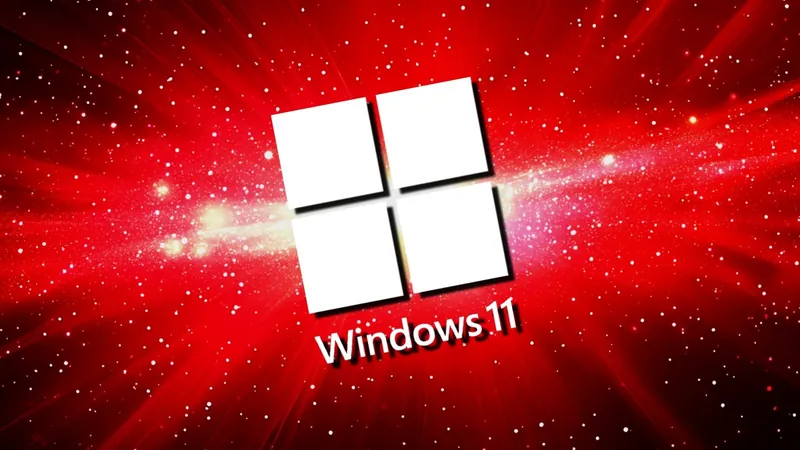
Microsoft Declares TPM 2.0 Essential for Windows 11—Are You Ready for the Switch?
2024-12-05
Author: Benjamin
Microsoft has drawn a firm line in the sand this week regarding Windows 11 upgrades, making it clear that any Windows 10 users looking to elevate their systems must have TPM 2.0 (Trusted Platform Module 2.0) support—the company calls this requirement "non-negotiable."
But what exactly is TPM 2.0? It's a sophisticated hardware-based security processor embedded in modern computers that plays a critical role in safeguarding sensitive information, such as encryption keys and security credentials. Given today’s rising cybersecurity threats, having this module has never been more important.
When Microsoft initially announced the necessity of TPM 2.0 for Windows 11 in June 2021, the rationale was straightforward: enhancing system resistance against tampering and complex cyberattacks. Yet, despite this stringent requirement, some resourceful Windows users have developed various tools, scripts, and workarounds to bypass TPM 2.0 checks. Microsoft has cautioned that employing these methods may jeopardize the performance and security of Windows 11 in the long run.
In a recent blog post, senior product manager Steven Hosking reinforced the importance of TPM 2.0, describing it as "a non-negotiable standard for the future of Windows." He elaborated on how this technology meets contemporary security challenges, employing advanced cryptographic techniques and integrating seamlessly with critical Windows security features like Secure Boot and Windows Hello for Business.
"TPM 2.0 enhances identity and data protection on Windows devices and is vital for maintaining the integrity of your system," Hosking stated, emphasizing that disabling TPM checks on Windows 11 systems could expose users to current cyber risks. Furthermore, as the influence of AI grows within both physical and cloud environments, TPM 2.0's role in securing sensitive data becomes even more crucial.
In light of Windows 10 nearing its official end of support on October 14, 2025—meaning users will no longer receive security patches or bug fixes—it's alarming to note that over 61% of Windows systems globally still operate on Windows 10, compared to a mere 35% on Windows 11, a full three years after its October 2021 launch.
To ease this transition, Microsoft has announced that Windows 10 home users can opt for a one-year delay on switching to Windows 11 by paying $30 for Extended Security Updates (ESU). Yusuf Mehdi, Microsoft’s Executive Vice President and Consumer Chief Marketing Officer, elaborated that this option will be available closer to the 2025 end-of-support deadline.
It's worth noting that specialized versions of Windows 10, such as Long-Term Servicing Branch (LTSB) and Long-Term Servicing Channel (LTSC) releases, will continue to receive updates beyond October 2025. For instance, Windows 10 2016 LTSB will remain supported until October 13, 2026, and Windows 10 IoT Enterprise LTSC 2021 will receive updates for six more years, with an extended end date of January 13, 2032.
In another significant update from Microsoft, it's worth mentioning that Windows 11 24H2 has now entered "a new stage of availability,” rolling out to an increasing number of compatible devices running earlier versions of Windows 11—22H2 and 23H2.
In summary, as Microsoft pushes users toward the necessity of TPM 2.0 for a secure Windows 11 experience, those still clinging to Windows 10 must make informed choices swiftly. Are you ready to adapt, or will you risk remaining vulnerable in an increasingly perilous digital landscape?









 Brasil (PT)
Brasil (PT)
 Canada (EN)
Canada (EN)
 Chile (ES)
Chile (ES)
 España (ES)
España (ES)
 France (FR)
France (FR)
 Hong Kong (EN)
Hong Kong (EN)
 Italia (IT)
Italia (IT)
 日本 (JA)
日本 (JA)
 Magyarország (HU)
Magyarország (HU)
 Norge (NO)
Norge (NO)
 Polska (PL)
Polska (PL)
 Schweiz (DE)
Schweiz (DE)
 Singapore (EN)
Singapore (EN)
 Sverige (SV)
Sverige (SV)
 Suomi (FI)
Suomi (FI)
 Türkiye (TR)
Türkiye (TR)